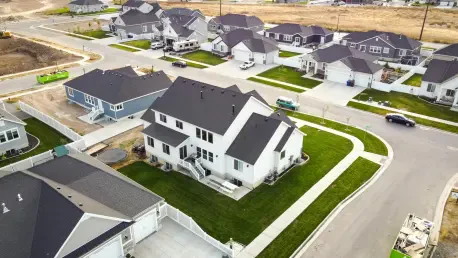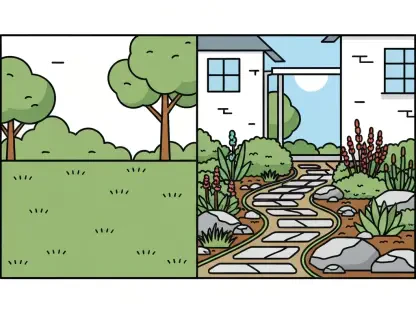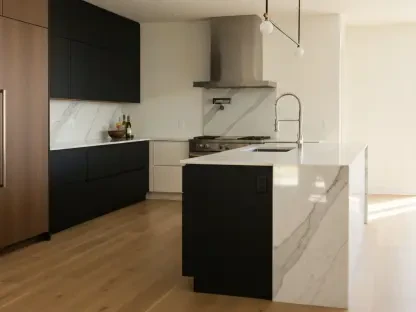The U.S. housing market, having faced significant upheaval due to the COVID-19 pandemic, appears to be gradually moving towards stabilization as of June 2025. This period has been characterized by evolving inventories, strategic shifts by sellers, and notable regional disparities in housing dynamics. With a marked increase in available listings and a cautious stabilization of prices, the housing landscape reflects a cautiously optimistic shift. Yet, the complexities introduced by previous years’ disruptions still linger, leading to a landscape marked by uneven recovery across various U.S. regions. The key question that many stakeholders, from potential buyers to policymakers, are asking is whether these signs truly indicate the onset of a steadier phase in the housing sector or if further fluctuations are yet to come.
Inventory Growth and Regional Disparities
The housing inventory in the United States has exhibited a noticeable rise, growing by 28.9% year-over-year. Over one million active listings have been recorded for two consecutive months, signaling a recovering trend in housing supply, though inventory still sits 12.9% below pre-pandemic levels. The total number of unsold homes, including those under contract, increased by 20% compared to a year earlier. Despite these gains, recovery remains uneven across regions. The West and South have demonstrated robust inventory growth, exceeding pre-pandemic levels, attributed to more aggressive construction and adaptive market practices.
Conversely, the Northeast and Midwest lag behind, with slower recovery rates. These regions continue to grapple with historical supply constraints, contributing to a disparate recovery pattern. Several factors might support these trends, including differences in housing policies, local economic conditions, and regional population shifts. As supply increases, buyers in the more dynamic regions are presented with broader choices, while in less thriving areas, limited supply continues to challenge potential purchasers.
Seller Dynamics and Strategic Adjustments
Sellers in the current market are adopting strategic adjustments to navigate the transformed landscape. As of June 2025, more than one in five listings has experienced price reductions, marking the highest proportion for any June since at least 2016. This trend indicates an adaptive approach by sellers who are becoming more flexible with pricing strategies to align with current market conditions. Moreover, a notable increase in delistings has been observed, suggesting that many sellers prefer to withdraw homes from the market rather than lower their expectations when price demands are not met.
These seller behaviors highlight a deeper understanding of market conditions and the complexities of housing economics following pandemic-era changes. For sellers, the decision to delist can reflect long-term confidence in their property’s value, especially for those who accrued significant equity during previous market upswings. By contrast, flexible pricing strategies can serve as a tool for sellers to remain competitive in a market where buyer preferences and negotiating power have shifted. The overall sentiment suggests a more sophisticated seller market, balancing between short-term sale objectives and long-term asset management.
Pricing Trends Amidst Stabilization
In terms of pricing, national median list prices have shown relative stability, with a modest year-over-year increase of 0.2%. This stabilization aligns with the levels witnessed from 2022 through 2024. Similarly, the median price per square foot saw an increase of 0.7%, indicating subtle pressure on home values as the market seeks equilibrium. The trend of price stabilization suggests that the housing market may be moving toward a more balanced state. However, this national perspective masks considerable regional variations that contribute to a more complex picture of the housing landscape.
While nationwide averages reflect stability, specific regions—particularly the South and West—have contended with more pronounced price fluctuations. In these volatile markets, price cuts are more prevalent, driven by both stronger supply growth and varying demand levels. In contrast, the Northeast exhibits modest price growth, supported by historically tight supply conditions. These regional price dynamics underscore the importance of localized market analysis, as national figures may not fully capture the intricacies of regional housing trends, buyer preferences, and economic conditions.
Market Timing and Sale Dynamics
The timing of sales within the market provides further insight into the overall housing environment. Homes have spent a median of 53 days on the market, slightly elongated from the previous year but consistent with pre-pandemic norms for June. This extension may indicate an ongoing search for equilibrium between buyers and sellers, as both parties adjust to the current conditions. Concurrently, pending home sales have experienced a minor year-over-year decline of 1.6%, reflecting subdued buyer activity in some regions, likely influenced by persistent affordability challenges and economic headwinds.
The prolonged time homes spend on the market could signify caution among buyers who are more discerning in their purchase decisions, evaluating both the available inventory and their financial capabilities. Sellers, recognizing this trend, may be exercising patience, either maintaining current listings on the market or opting for strategic delistings. Both scenarios underscore a cautious market, where timing and pricing remain critical factors in achieving successful transactions. The overall scenario reflects a market self-correcting to adapt to broader economic uncertainties and demographic shifts.
Consumer Demand and Affordability Concerns
Consumer demand within the U.S. housing sector remains intricately linked to prevailing affordability challenges. Even with increased inventory levels, potential buyers face difficulties securing homes due to elevated prices and persistent interest rates. This situation has tempered demand, highlighting the ongoing tensions between market conditions and consumer capabilities. Rising housing costs continue to outpace income growth for many Americans, contributing to housing unaffordability across several regions, notably in high-demand urban and suburban centers.
Affordability issues are further compounded by external economic factors such as inflationary pressures and fluctuating interest rates that impact mortgage affordability. As interest rates remain relatively high, borrowing costs for home buyers surge, presenting a significant barrier to ownership despite ample listings. In response, many consumers may opt for rental alternatives, exacerbating housing shortages in rental markets. The paradox of high inventory meeting tempered demand underscores systemic challenges that require coordinated efforts from stakeholders, including policymakers and financial institutions, to address affordability and stimulate sustainable housing growth.
Concluding Insights and Future Considerations
The U.S. housing market as of June 2025 paints a nuanced picture of a sector on the path to stabilization, marked by regional disparities and evolving strategies among sellers. The recovery in housing supply, most notably in the South and West, signifies movement towards pre-pandemic norms, even as challenges persist in other regions. Stabilized national pricing combined with intricate regional variations reflects an underlying recalibration in market dynamics. Seller behavior, characterized by strategic pricing and delisting, highlights a mature understanding of current conditions amidst broader economic challenges.
Moving forward, the housing market’s trajectory will depend on various macroeconomic variables, including interest rate policies and regional housing initiatives. The landscape may benefit from targeted interventions aimed at enhancing affordability and promoting equitable housing growth. With buyers and sellers recalibrating to these conditions, the coming months present opportunities for further consolidation of recovery. The 2025 housing market encapsulates a transformative period, defined by its adaptability and resilience, underscoring the ongoing process of adjustment and normalization in the post-pandemic environment.









